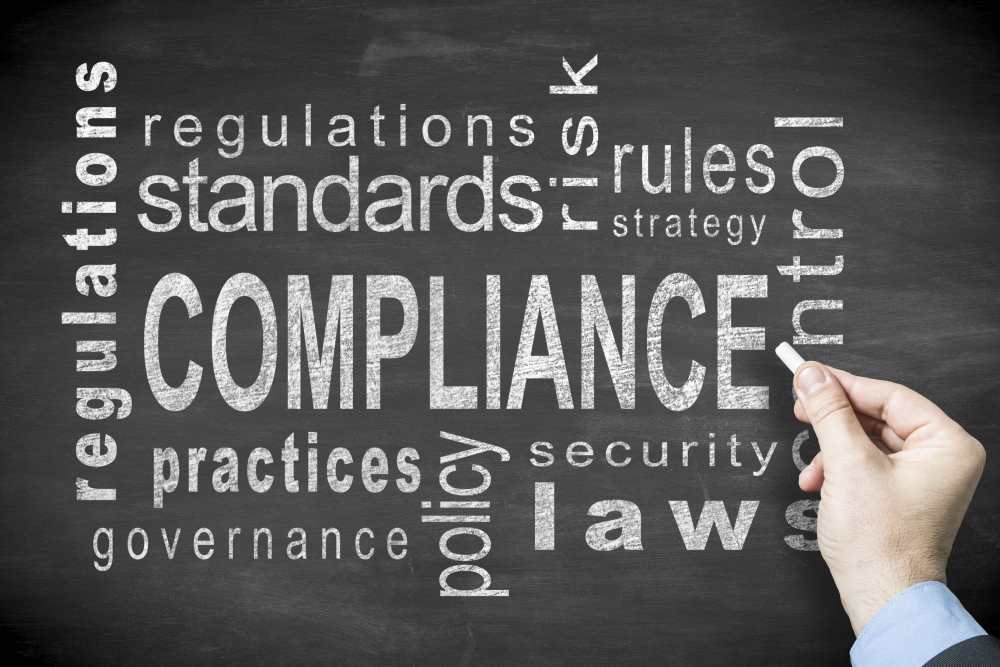If you are associated with a charitable organization in Canada, do read on. Share this information with Board members, other appropriate volunteers, and staff.
If yours is a non-profit organization considering charitable status, do take the contents of this paper into consideration as you move forward.
Beginning in 2009, our Centre was granted support by the Canada Revenue Agency (CRA) to create and deliver a workshop curriculum to small and rural charities, one that demystified the language of CRA, and clearly explained issues related to charity governance and compliance.
This information is a compendium of the items that represented the most ‘a-ha!’ moments for the 1,100 non-profit and charity representatives who participated in one of the 29 workshops that we convened across Western Canada over that year.
The contents of this blog were reviewed and updated in 2015.
Charities versus non-profits
First, a brief explanation of the differences between charities and non-profits. An organization must first establish itself as a non-profit before it applies to CRA’s Charities Directorate to obtain charitable status.
It is estimated that there are about as many non-profit organizations in Canada as there are charitable organizations (over 85,000 in each group).
Being a charitable organization means that the group can issue official receipts for income tax purposes, to donors. Donors can then receive (personal and corporate) income tax credits for their donations. Being a charity also means that the organization can accept grants from other registered charities (charitable organizations and foundations: both public and private), and other ‘qualified donees’.
Especially if an organization doesn’t view itself as needing to approach the public for donations, and if it does not require project / operating grants from charities and foundations, there is less reason to apply for charitable status. Certainly, the administrative burden is heavier for charities, and there are more restrictions with respect to how they can make use of their resources (political and social activities being examples of items that are limited).
For an in-depth comparison of registered charities versus non-profit organizations, see CRA’s excellent web page on the topic.
Charitable registration is a one-way street. If a charity decides to dissolve (or revert back to status as a non-profit organization), or if its registration is revoked by the CRA, the charity must either pay the CRA a 100% tax on its assets (referred to as a ‘revocation tax’), or transfer those assets to another charity. So, the decision to register as a charity must be made carefully.
1. One way to jeopardize your charity:
GIVE GRANTS TO NON-PROFITS
Two practices that are offside with CRA are the ‘lending’ of a charitable number to non-charities, or acting as a ‘flow-through’ for non-charities. These actions seem to be undertaken often, in some cases in return for an ‘admin fee’ back to the charity.
Related to this activity is the granting of funds to a non-profit by a charity. It is essential to keep in mind that charities (including foundations) can only extend grants to qualified donees. Non-profits are NOT qualified donees.
It is possible for a charity to direct funds to non-profits, businesses, and individuals, but only in a situation where the payee is fulfilling a contract for the charity. The charity must retain direction and control over the work.
When a charity is detected directing gifts to non-qualified donees (such as non-profits), or lending its charitable number to another body to apply for a grant, the charity is fined 105% of the amount. For the second infraction, the fine is 110%. The third infraction would likely result in revocation of the charity’s status.
Revocation means that the charity would need to gift all assets to a charity or pay the full equivalent amount to the CRA. It would no longer be able to issue charitable tax receipts for donations, nor would it be a qualified donee (ending access to grants from foundations and other charities).
2. Another way to jeopardize your charity:
DRIFT FROM YOUR CHARITABLE PURPOSES
The charitable purposes or ‘objects’ are the exact wording that the charity submitted to CRA when originally applying for charitable status. This specific language is what was approved by CRA, and denotes exactly the activities that the specific charity is allowed to undertake.
This special wording is not to be confused with a vision or mission statement, or a strategic plan. Often, strategic planning processes are undertaken without the charitable purposes in mind. Too often, this burying of the official allowable charitable activities of the organization leads to ‘drifting’ away from the activities that the charity is actually allowed to undertake. This is a specific risk for older organizations, which may have experienced many changes in leadership, lost its ‘institutional memory’, or has simply responded to changing community needs over time.
Revisit your charitable purposes, and ensure that your charity is still working within them. For example, perhaps a charity began its life as an organization that assisted women, then over time, it included children as well. As noble and as charitable as the activity remains, if CRA did not approve this shift, then the charity is technically operating offside with CRA.
There are two choices, in order to remain within CRA requirements: either cease the activity, or apply to CRA to have the charitable objects amended.
If your choice is the latter, ensure that the new activity safety falls within the four ‘heads’ of charity. These are relief of poverty; advancement of education; advancement of religion; and other purposes beneficial to the community in a way the law recognizes as charitable (this is a catch-all category based on Canadian case law and related precedent).
3. Another way to jeopardize your charity:
DON’T FILE YOUR ANNUAL INFORMATION RETURN (T3010)
Failure of a charity to file its annual information return or T3010 is the most common reason for revocation of charitable status.
Since 2010, the CRA has revoked 1,700 charities per year, on average. Of these, 43% were revoked due to a failure to file their T3010. Of those, nearly 40% are situated in the charitable category of advancement of religion.
The T3010 is the key means that CRA has to gauge compliance. If the T3010 is not submitted, then the CRA has limited avenues (short of audits) of verifying that the charity is operating properly.
In 2009, the T3010 was simplified, and became much easier to complete. Helpful online resources from CRA make the process even clearer.
The T3010 is due to be filed six months past the fiscal year-end of the organization. A late filing fee of $500 will be applied if this deadline is missed. Note that a T3010 filed without accompanying financial statements is considered to be an incomplete submission.
4. Another way to jeopardize your charity:
ISSUE DONATION RECEIPTS IN EXCHANGE FOR SERVICES
Official donation receipts can only be issued if the gift is property. Cash and tangible items (e.g. office supplies, equipment, etc.) are considered to be property. Services are NOT considered to be property.
For example, if someone offers free marketing services or bookkeeping to a charity, an official donation receipt for tax purposes cannot be offered. Similarly, if a hairdresser donates a gift certificate for a silent auction, this cannot be receipted. Nor can a spa gift certificate, because there is no way of knowing whether the end user will convert the certificate to property (e.g. skin care products) or a service (such as a massage).
Likewise, a person donating their time to the charity as a volunteer cannot be remunerated with a donation receipt.
There is a practice called a ‘cheque exchange’, which is a perfectly legitimate way of ‘converting’ a donation of a service to property (which is then receiptable). Cheque exchanges, however, only add administrative work to the charity, with no pay-off for the donor.
This is how it works: 1. a donation of a service is made to the charity by a business 2. the donor then invoices the charity for the service 3. the charity pays the invoice 4. the donor then gifts the payment back to the charity 5. now that the donation is cash (and therefore property), the charity issues a donation receipt to the donor.
The reality of the cheque exchange is that the donor has just issued an invoice, which is a sale to be claimed as income. The donation receipt is an expense that is applied to the income, and thereby ‘cancels it out’. The net result is nil to the donor, because the receipt only serves to negate the recorded income.
Receipting on items that are not truly receiptable is an area of huge concern for CRA, because every donation receipt that is claimed as an income tax credit by the donor represents foregone tax revenue for the government. During our workshop delivery, we heard a horror story that involved a charity auctioning off three $5,000 donation receipts to the highest bidders!
5. A final way to jeopardize your charity:
OPERATE AN UNRELATED BUSINESS WITHIN YOUR CHARITY
The CRA’s Policy Statement CPS-019 What is a related business? details the nuances of when a social enterprise can be operated within a charity, and when another structural option (i.e. a taxable corporation) must be chosen. This document is ‘must’ reading for charities considering or engaged in social enterprise.
‘Social enterprise’ has, as yet, no legal meaning in Canada. The CRA guidance therefore refers to ‘related’ and ‘unrelated’ business. Related business can be operated within a charity. Unrelated business cannot. The difference between the two is a great source of misunderstanding for social enterprise operators. Most believe that they are operating a related business. Many times, they are not.
Many charities erroneously assume that as long as the profits are flowing back to the charity’s good works, then the enterprise can be operated legally as a project within the charity. This is called ‘the destination test’… and would hold true if the charity was based in New Zealand!
Canadian social enterprises need to dig deeper, ensuring that they are operating a related business. CRA defines ‘related businesses’ as two kinds: 1) businesses that are run substantially by volunteers; or 2) businesses that are linked to a charity’s purpose and subordinate to that purpose.
If the social enterprise is 90% volunteer-run, then the tests below for linkage and subordination need not be considered.
‘Linkage’ cannot be claimed merely by the fact that the profits from a social enterprise are directed to a charity. ‘Linkage’ to the organization’s charitable purpose means that the business must meet one of the following tests. To be considered related, the business must:
- Be a usual and necessary concomitant of charitable programs (e.g. a hospital parking lot, a university bookstore, a museum gift shop); or
- Be an offshoot of a charitable program (e.g. a church that records and sells choir recordings); or
- Represent a use of excess capacity (e.g. charging for parking lot use during hours of closure, or renting out event tents when not being used by the charity); or
- Involve the sale of items that promote the charity and its objects (e.g. calendars, T-shirts, etc.).
All of the examples given above are CRA’s own examples. With respect to item #3 (excess capacity), it is of interest to note that CRA’s examples are of excess assets, and not staff time… so we have no clarity on what percentage of staff time would be considered an acceptable ‘linked’ use for social enterprise activities.
Many organizations define ‘linkage’ far too loosely. They assume that if the social enterprise relates to the clients that they serve in some way, then the enterprise is a related business that can therefore be operated within the charity. This is not the case – at least one of the four areas of linkage outlined above must be demonstrated in order for the charity to use the linkage argument.
‘Subordination’ means that the business activity must:
- Receive a minor portion of the charity’s attention and resources; and
- Be integrated into the charity’s operations, rather than acting as a self-contained unit; and
- Not dwarf the charity’s decision making so that charitable goals take a backseat to the enterprise’s; and
- Not involve private benefit.
All four of these areas of subordination must apply to the social enterprise in order for it to be considered a related business.
If the social enterprise is not substantially run by volunteers, and if linkage and subordination cannot be demonstrated, then the charity is operating what CRA calls an unrelated business.
In the case of unrelated business, the charity is advised to establish a separate legal entity (usually a taxable corporation), which must operate at absolute arms’ length from the charity. This includes a separate Board of Directors, ledger, bank account, etc.
The separate legal entity that holds the unrelated business cannot benefit in any way from the charity that owns it. To err on the side of caution, charities should enact absolute separation of staff, equipment, and sundry supplies; or a clear paper trail that shows the corporation paying fair market value for use of the charity’s resources, such as rent.
An unrelated business cannot be run as a ‘project’ within the charity, but must be established as a completely separate legal entity, remitting corporate taxes on net income derived from social enterprise activity. The corporation can donate up to 75% of its net profits to the charity, and only pays income tax on the remaining net profit after the donation is made.
When an unrelated business is detected by CRA within a charity, the fine is 5% of gross revenues of the venture. Upon the second discovery, the fine is 100% of gross revenues plus suspension of receipting privileges.
If you would like our help in determining whether your charity is compliant, do contact us to request a charity check-up!





